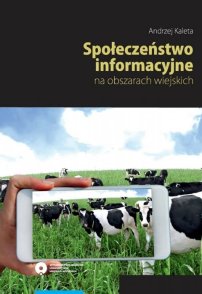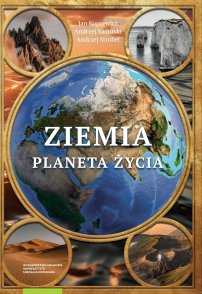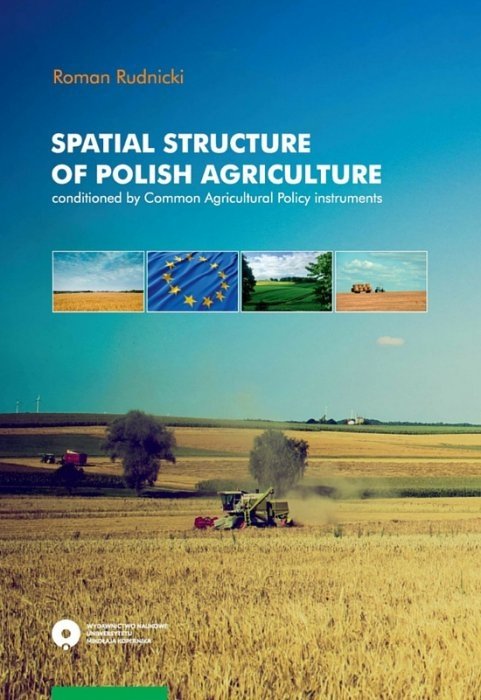Prof. UMK, kierownik Katedry Gospodarki Przestrzennej i Turyzmu Wydziału Nauk o Ziemi UMK w Toruniu. Autor 140 publikacji, głównie z zakresu geografii wsi i rolnictwa oraz absorpcji funduszy UE, zwłaszcza pozycji książkowych: Geograficzno-ekonomiczne czynniki kształtujące produkcję rolnictwa indywidualnego na przykładzie makroregionu dolnej Wisły (1997), Zmiany układu przestrzennego struktury agrarnej Polski Północnej w latach 1988-1998; uwarunkowania – dynamika – kierunki (2001), Grunty Agencji Własności Rolnej Skarbu Państwa w województwie kujawsko-pomorskim – przejęcie, rozdysponowanie i wpływ na strukturę agrarną (2002, razem z M. Klubą i L. Kozłowskim), Przedakcesyjny Program Rozwoju Rolnictwa i Obszarów Wiejskich SAPARD – studium przestrzenne (2008, red.), Renty strukturalne jako czynnik przemian agrarnych i demograficznych w rolnictwie polskim w latach 2004-2006 (2009), Fundusze Unii Europejskiej jako czynnik modernizacji rolnictwa polskiego (2010, red.), Zróżnicowanie przestrzenne wykorzystania funduszy Unii Europejskiej przez gospodarstwa rolne w Polsce w latach 2004-2006 (2010), Zintegrowany rozwój obszarów wiejskich w świetle polityki Unii Europejskiej, t. 1, Rolnictwo i Wspólna Polityka Rolna (2014, red. razem z M. Klubą), Użytkowanie ziemi i produkcja rolnictwa w województwie kujawsko-pomorskim w latach 2002-2010 (2014, razem z M. Klubą).
Spatial structure of Polish agriculture conditioned by Common Agriculture Policy instruments
The works includes the results of complex analyses of the spatial structure of the Polish agriculture (based on the data collected in the National Agricultural Census 2010), complete with the impact assessment of several determinants – focusing mostly on the Common Agricultural Policy funds (Chapter 2). The study has been conducted on six groups of agricultural features, i.e.: land quality and land use (Chapter 3), agrarian structure (Chapter 4), sociodemographic features (Chapter 5), technical infrastructure in agricultural holdings (Chapter 6), structure of agricultural production (Chapter 7) and productivity of agricultural holdings (Chapter 8). Finally, there is a comprehensive analysis of these issues (Chapter 9 and 10).
1. INTRODUCTION / 9
2. EXTERNAL DETERMINATNS IN AGRICULTURE AND COMMON AGRICULTURAL POLICY FUNDS / 15
2.1. Natural determinants in agriculture / 15
2.2. Man-made determinants in agriculture / 18
2.3. CAP funds as new determinant of spatial diversification of Polish agriculture / 21
2.3.1. CAP funds and their impact on spatial structure of agriculture – funding kinds and purposes / 22
2.3.2. CAP funds – general absorption level / 31
3. LAND QUALITY AND LAND USE / 35
3.1. Scope of analysis / 36
3.1.1.Land use features / 36
3.1.2. Agricultural land use structure / 37
3.1.3. Natural and ecological features / 39
3.2. Selection of diagnostic features and ecological quality rate of agricultural holding land / 41
3.2.1. Farm land of high natural and ecological value / 42
3.2.2. Lowest quality soil / 44
3.2.3. Priority areas within agri-environmental support programme / 46
3.2.4. Level of agricultural development with regard to land quality and land use / 47
3.3. Pro-environmental CAP instruments – absorption levels and impact assessment / 48
3.3.1. Implementation of CAP instruments dedicated for improvement of land quality and land use in agriculture – aid measures and composite index / 48
3.3.2. Assessment of CAP instrument impact on land quality and land use in agriculture / 54
4. AGRARIAN STRUCTURE / 57
4.1. Scope of analysis / 57
4.2. Selection of diagnostic features and indicator of agrarian structure / 59
4.2.1. Average total area of agricultural holding / 59
4.2.2. Share of agricultural holdings of over50 ha/ 61
4.2.3. Average plot area in agricultural holdings / 63
4.2.4. Level of agricultural development with regard to agrarian structure / 64
4.3. Implementation and impact assessment of CAP funds dedicated for improvement of agrarian structure / 66
4.3.1. Structural pensions as basis for construction of index of implementation of CAP funds related to agrarian structure / 66
4.3.2. Assessment of CAP instrument impact on agrarian structure / 69
5. SOCIAL FEATURES / 72
5.1. Analysis of social features of agriculture (selective approach) / 73
5.1.1. Human labour input in agriculture – scope of analysis, selection of diagnostic features and composite index / 73
5.1.2. Demographic structure – scope of analysis, selection of diagnostic features and composite index / 79
5.1.3. Farm managers’ education – scope of analysis, selection of diagnostic features and composite index / 85
5.2. Agricultural development in terms of socio-demographic features / 91
5.3. Implementation and impact assessment of CAP instruments dedicated for improvement of socio-demographic features in agriculture / 93
5.3.1. Implementation of CAP instruments dedicated for improvement of socio-demographic features in agriculture – aid measures and composite index / 93
5.3.2. Assessment of CAP impact on socio-demographic features in agriculture / 97
6. TECHNICAL INFRASTRUCTURE IN AGRICULTURAL HOLDINGS / 99
6.1. Analysis of technical features of agriculture (selective approach) / 99
6.1.1. Agricultural mechanisation – scope of analysis, selection of diagnostic features and composite index / 99
6.1.2. Agricultural chemicalisation – scope of analysis, selection of diagnostic features and composite index / 108
6.1.3. Selected aspects of water management in agriculture – scope of analysis, selection of diagnostic features and composite index / 113
6.2. Agricultural development in terms of technical infrastructure in agricultural holdings / 117
6.3. Implementation and impact assessment of CAP instruments dedicated for improvement of technical infrastructure in agriculture / 119
6.3.1. Implementation of CAP instruments dedicated for improvement of technical infrastructure in agriculture – aid measures and composite index / 119
6.3.2. Assessment of CAP instrument impact on technical infrastructure in agriculture / 123
7. STRUCTURE OF AGRICULTURAL PRODUCTION / 126
7.1. Scope of analysis / 126
7.1.1. Structure of sown area / 126
7.1.2. Livestock farming / 128
7.2. Selection of diagnostic features and index of agricultural development in terms of agricultural production structure / 130
7.3. Implementation and impact assessment of CAP instruments dedicated for modernisation of agricultural production structure / 136
7.3.1. Implementation of CAP instruments for improvement of agricultural production structure – aid measures and composite index / 136
7.3.2. Assessment of CAP instrument impact on agricultural production structure / 141
8. PRODUCTIVITY AND PROFITABILITY OF AGRICULTURAL HOLDINGS / 143
8.1. Agricultural productivity features and their composite index / 143
8.1.1. Features of agricultural productivity – scope of analysis / 143
8.1.2. Composite index of agricultural productivity / 145
8.2. Profitability of agricultural holdings – scope of analysis and composite index / 147
8.2.1. Features of agricultural profitability – scope of analysis / 147
8.2.2. Composite index of agricultural profitability / 150
8.3. Selection of diagnostic features and composite index of agricultural development in terms of productivity and profitability / 152
8.4. Implementation and impact assessment of CAP instruments dedicated for improvement of agricultural productivity and profitability / 153
8.4.1. Implementation of CAP instruments dedicated for improvement of agricultural productivity and profitability – aid measures and composite index / 153
8.4.2. Assessment of CAP instrument impact on agricultural productivity and profitability / 159
9. IMPACT OF CAP INSTRUMENTS ON POLISH AGRICULTURE – COMPOSITE APPROACH / 161
9.1. Level and structure of agricultural development / 161
9.2. Implementation of CAP funds / 172
9.3. Assessment of CAP funds impact on agriculture / 181
10. SUMMARY / 191
LITERATURE / 198
APPENDIX
1. Abbreviations Used in the Work / Appendix 1
2. Administrative Division ofPoland– poviats (by towns where country district authorities are seated) / Appendix 2
Roman Rudnicki
- Rolnictwo Polski. Studium statystyczno-przestrzenne, lata 2002-2010
- Użytkowanie ziemi i produkcja rolnictwa w województwie kujawsko-pomorskim w latach 2002-2010. Studium statystyczno-przestrzenne
- Zmiany układu przestrzennego struktury agrarnej Polski północnej w latach 1988-1998
- Grunty Agencji Własności Rolnej Skarbu Państwa w województwie kujawsko-pomorskim. Przejęcie, rozdysponowanie i wpływ na struktur
- Zintegrowany rozwój obszarów wiejskich w świetle polityki Unii Europejskiej. Integrated rural development under the policy of the European Union. Tom 1: Rolnictwo i Wspólna Polityka Rolna. Agriculture and the Common Agricultural Policy
Powiązane

Kontrola przestrzegania prawa wspólnotowego przez państwa i podmioty prawne w Unii Europejskiej
Maciej Górka
Wspólna Polityka Rolna Unii Europejskiej a zrównoważony rozwój obszarów wiejskich Polski. Analiza socjologiczna
Wojciech Knieć
Społeczeństwo informacyjne na obszarach wiejskich
Andrzej Kaleta
Zintegrowany rozwój obszarów wiejskich w świetle polityki Unii Europejskiej. Integrated rural development under the policy of the European Union. Tom 1: Rolnictwo i Wspólna Polityka Rolna. Agriculture and the Common Agricultural Policy
Roman Rudnicki, Mieczysław KlubaInne z tej kategorii

Ziemia. Planeta życia
Jan Kopcewicz, Andrzej Sadurski, Andrzej Strobel
Biblioteka Polskiego Przeglądu Kartograficznego. Tom 5: Zagraniczne piśmiennictwo kartograficzne 1968–2018
Zenon Kozieł
Leksykon polityki rowerowej
Michał Kwiatkowski, Łukasz Karbowiński






